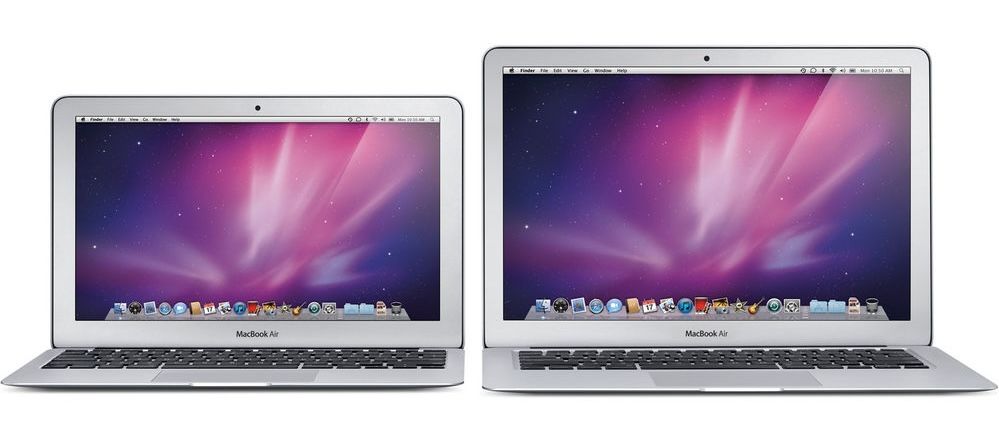Apple used to sell super-compact MacBook laptops, but they were limited by the hardware of the time. Now, Apple should bring them back.
The Last Tiny Air
It has been almost a decade since Apple released laptops with screens smaller than a diagonal 13 inches. The company’s last 11-inch laptop was the early 2015 MacBook Air, complete with a dual-core Intel Core i5 processor, up to 512GB flash storage and 8GB RAM, and a low-resolution 1366×768 display.
The small and light 2015 Air was mostly well received. LaptopMagcalled it “a very light ultraportable that offers great performance and battery life for the price,” and PCMagsaid it was “a wonderful commuter laptop.” Apple clearly made some tradeoffs to create a thin and light MacBook priced at under $900, but most of them were understandable, and anyone needing more features or a better screen could just buy the 13-inch Air instead.
The next year, Apple released the 12-inch Retina MacBook. It was the thinnest and lightest MacBook to date, but it sacrificed a lot to get there, and it had a starting price of $1,299. The only physical connectors were a single USB Type-C port and an audio jack, so USB hubs and adapters were almost mandatory. Devices and cables with USB-C were incredibly rare at the time, and unless you had a hub with charging pass-through, you couldn’t plug in anything while the laptop was charging. It also used a lower-power Intel chip, because there wasn’t enough room for active cooling with fans.
Reviews for the 12-inch MacBook were mixed. TrustedReviewssaid, “There’s a great deal to love about it, but only if you can make peace with the compromises it forces upon you.” The Vergesaid it didn’t “have the right processor to power through the apps I need without ruining battery life.” The laptop was just ahead of its time, and the Intel processors of the era couldn’t maintain high performance with only passive cooling.
People generally like bigger screens, and it’s easier to put larger batteries and improved cooling in larger machines, so it’s not a surprise that all later MacBook and MacBook Air models used 13 or 14-inch displays. Apple even introduced a 15-inch model in 2023.
Bring it Back
It’s high time for Apple to bring back the ultra-portable MacBook. It could be just a bit larger than the typical iPad, but with a fully integrated keyboard, trackpad, and a real desktop operating system. It’s a market that the PC industry has never left, though most PC laptops this size (such as the Lenovo IdeaPad Duet 3) are more like tablets with detachable keyboards.
The older Intel-based MacBook Air laptops had limited performance, as the more power-hungry x86 CPUs couldn’t fit into a thin-and-light design without thermal throttling. The newer Apple Silicon chips going into modern MacBooks and iPads don’t have that problem. They’re fast and power-efficient in a way that simply wasn’t possible a decade ago.
It seems like Apple could easily build a smaller MacBook while maintaining high performance. Ideally, it would be less expensive than the base model MacBook Air, which is $999 in the United States. The smaller screen would cut costs, and maybe Apple could use different materials.
Not an iPad
You might be thinking, “but wait, Apple already sells smaller computers, just buy an iPad!” That’s true, but iPads are not a real alternative to a Mac or PC laptop for many tasks. Web browsers are more limited, because Apple doesn’t allow third-party browser engines. You can’t use a full-featured Terminal with Unix utilities. You can’t do most software development, or use most emulators, or virtualize Windows and desktop Linux.
It’s true that many people can do everything they need from an iPad. Apple already sells the larger and more powerful iPad Pro for the people who want to use an iPad as their primary computer. Why can’t the Mac get the reverse treatment? Why is there a MacBook-sized iPad but not an iPad-sized MacBook?
You also have to spend more money to turn an iPad into something closer to a laptop. The base 10th gen iPad starts at $349, and the cheapest official keyboard case (the Magic Keyboard Folio) costs $249. That’s around $600, not counting the Apple Pencil if you want that, and you still have a computer that can’t run the full-featured versions of Google Chrome, Adobe Photoshop, Visual Studio Code, and countless other apps and games. An iPad Air or Pro with a high-quality keyboard case is easily within pricing territory of the MacBook Air and many PC ultrabooks.
I would love a super-compact MacBook. And no, an iPad is not for me.







